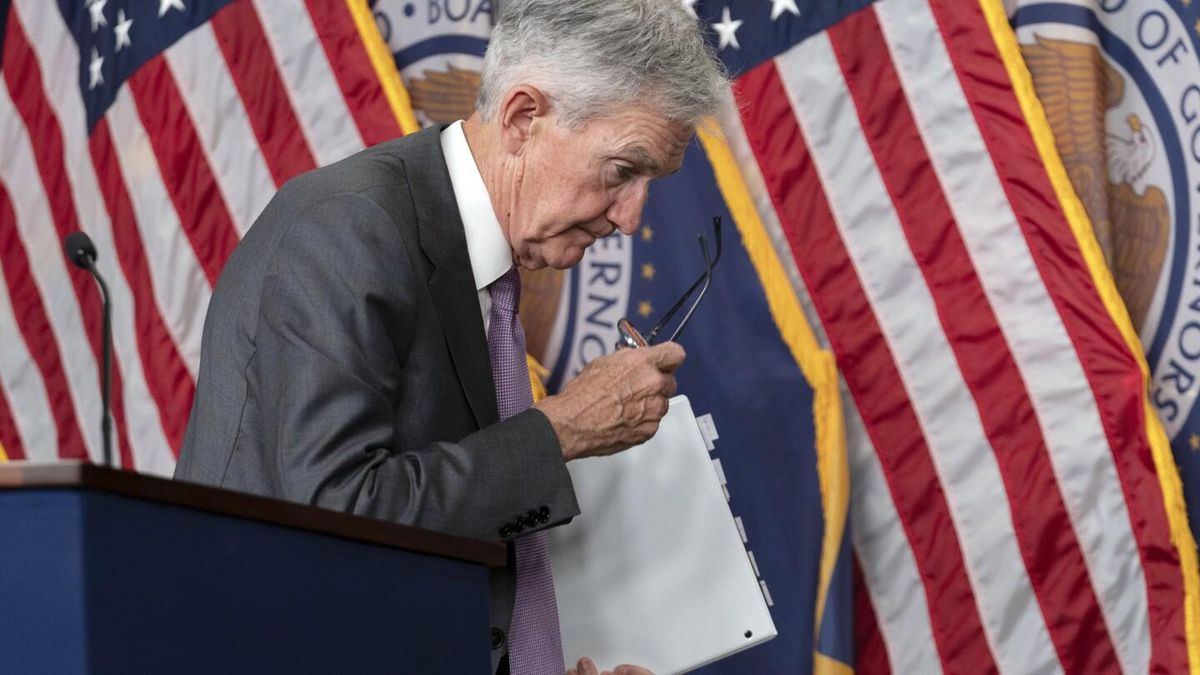The anticipation is palpable as the Federal Reserve prepares to implement its first interest rate cut in four years. This moment marks not just another economic maneuver but potentially changes the financial landscapes for households across the United States and beyond. The rate cut is likely to impact various sectors, particularly mortgages, credit cards, and savings accounts, affecting millions of Americans and even rippling across the globe.
Currently, the Fed's benchmark lending rate hovers around 5.3%, its highest since 2001, after being raised from near zero starting back in 2022. The impending cut promises relief for many borrowers, particularly as mortgage rates have already started to decline slightly, with banks now possibly lowering savings rates as well.
The US isn’t the only place feeling the heat of impending rate changes; nations and central banks tied closely to the dollar could also see impacts. Central banks from Hong Kong to various Gulf states typically adjust their rates reflecting the Fed’s decisions. Investors globally are closely monitoring this situation, as reduced interest rates tend to encourage stock market performance. Lower rates mean more accessible borrowing for companies, which may lead to higher profits—and hence, higher stock prices—as less tempting investment opportunities like savings accounts cause investors to shift their money toward stocks.
The backdrop to this decision involves the Fed’s previous stance, which focused heavily on combating inflation for the past couple of years. With inflationary pressures easing and unemployment gradually ticking upwards, many analysts interpret this rate cut not just as relief from high borrowing costs, but as recognition of the shifting economic dynamics. Inflation dropped as low as 2.5% this August, signaling to the Fed it could now pivot its focus toward more supportive measures for the job market.
The Fed has typically operated on two anchors: inflation and employment. After hiking interest rates to combat inflation—which surged to levels not seen since the 1980s—the decision now swings toward stimulating growth without prompting another inflationary surge. The reasoning is straightforward: low rates typically fuel spending by making borrowing cheaper.
While many analysts speculate on whether the initial cut will be 0.25 percentage points or the more aggressive route of 0.5 points, most agree this could mark the beginning of several cuts over the next year. The public, meanwhile, will need to wait for clearer hints on how low rates might eventually go.
But let’s talk practicalities. Lower rates can mean tangible benefits for homebuyers. For example, on the horizon, prospective buyers eyeing an $800,000 mortgage will be particularly interested to learn how much their monthly payments could decrease following the anticipated cuts.
Currently, with rates at 6.41% for 30-year mortgages, monthly payments for such loans could climb over $4,000. Yet, if the rates dip by just 0.25 percentage points, they could fall to around $3,903 per month; with reductions down to 5.91%, that's hundreds of dollars saved monthly. A wider cut might yield even greater relief, attracting more buyers and potentially amplifying demand, which could, paradoxically, drive home prices upward.
Yet, it’s important to keep other expenses in mind. Monthly mortgage payments usually don’t include homeowners insurance and taxes, which can significantly increase the actual cost of home ownership. Not to mention, with down payments less than the standard 20%, buyers are often subject to private mortgage insurance (PMI), adding another layer of complexity and cost.
Now, steering back to the broader impact. The Fed’s actions could serve to shield not just US consumers but also economies internationally tied to American monetary policy. Economies often mirror the Fed’s movements; lower borrowing costs can lead to more spending—stimulating growth and possibly leading to fewer job losses globally. This interconnectedness is the reality of our global economy.
Indeed, the Fed’s rate cuts will play not just on Wall Street but resonate across every household’s budget. Some may find themselves reconsidering large purchases, investments, or even refinancing existing loans once lower rates become official. For anyone currently holding variable rate debts, the sigh of relief is palpable as they prepare for diminished monthly payments.
Investors too are bracing for this change. The general consensus plays out as being favorable for stock values, which typically surge following rate cuts. Companies can take on cheaper loans and pour funds back for expansion, research, and development. This reinforces the idea of stocks being attractive during times of low rates—a classic relationship well embedded within economic frameworks.
Yet the Fed holds its cards close to the chest, only divulging hints of strategy at the time of announcements. Despite speculations surrounding the economic motives behind the cuts, including potential political pressures, Fed Chair Jerome Powell has reiterated the commitment to data-driven decisions, distancing monetary policy from electoral influences.
The perspective around this cut also shifts depending on whom you ask. Consumer advocacy groups herald it as good news, arguing lower rates bolster borrowing and stimulate spending. Conversely, some market analysts caution against the lower rates automotives; increased buying might offset the immediate benefits of lower borrowing costs, especially with homes fetching prices reaching $1 million or more, meaning the risk of exacerbation of previous inflationary trends has not yet been shaken off.
For those anxiously waiting for the Fed's announcement, relaxing might be out of the question. Each tick of the clock brings their financial futures one step closer to clarity or complexity, depending on the decision made and how the market reacts. Whether for the basis of loans, mortgages, stocks, or consumer goods, the forthcoming interest rate cut by the Federal Reserve signifies much more than mere numbers; it embodies the shifting tides of economic policy and its echoed influence on millions worldwide. Each detail matters, and as the biggest central bank steps forward, so too do the many financial lives dependent on its decisions.




